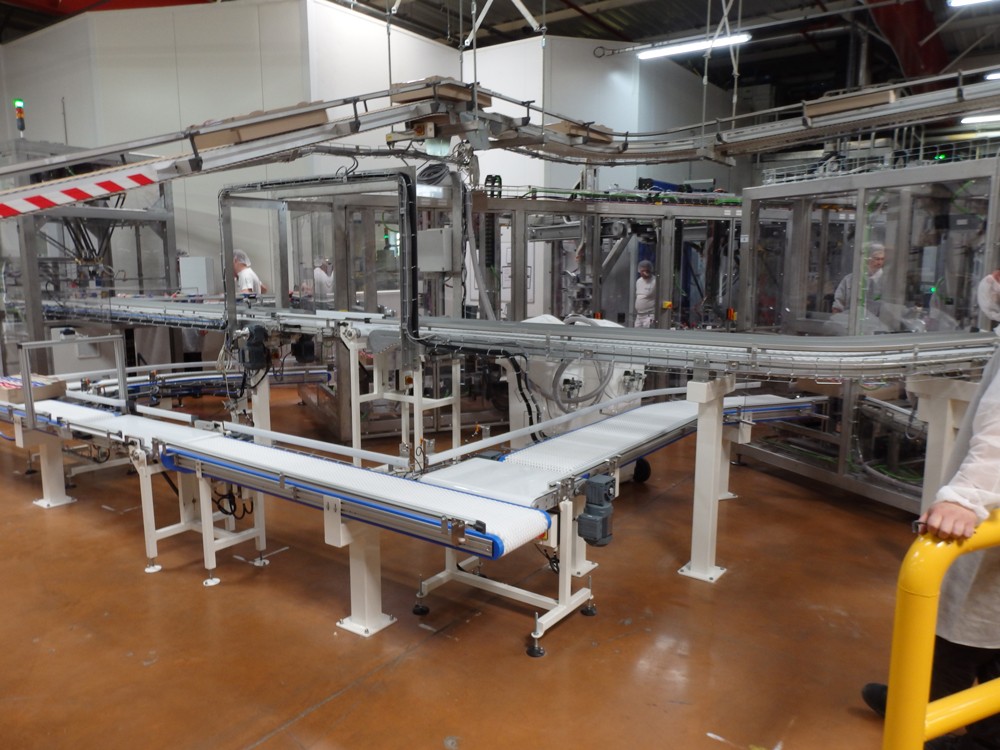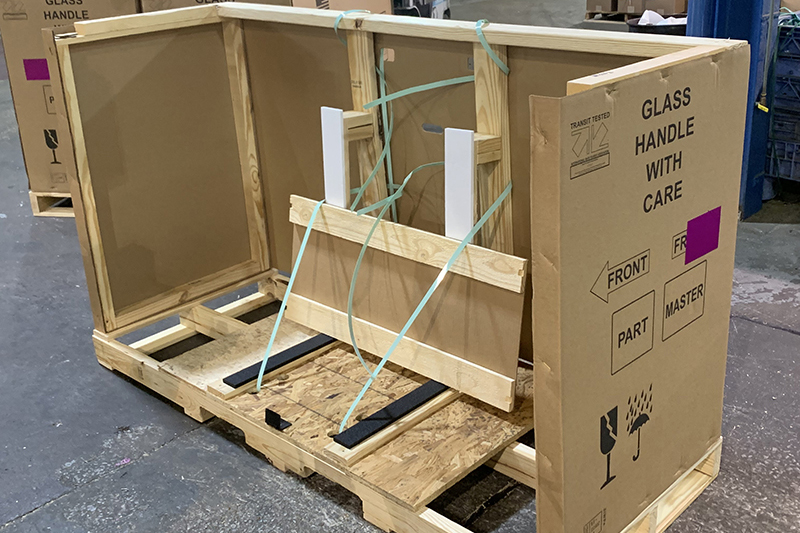Quality in Every Mold And Mildew: Plastic Container Manufacturer Knowledge
Quality in Every Mold And Mildew: Plastic Container Manufacturer Knowledge
Blog Article
Reliable Industrial Recycling Solutions for Lasting Product Packaging: A Comprehensive Guide
That's where this comprehensive guide on reliable industrial recycling options for sustainable packaging comes in. By checking out essential areas such as packaging material selection, designing for recyclability, carrying out reusing facilities, teaming up with reusing partners, and tracking and measuring recycling success, this overview will outfit you with the expertise and tools essential to make educated choices and drive positive change within your company. Whether you're a product packaging specialist, sustainability supervisor, or merely interested in the topic, this overview will certainly provide important understandings and approaches to help you browse the world of sustainable product packaging.
Product Packaging Product Choice
The choice of product packaging products plays a critical role in ensuring the sustainability of industrial reusing solutions. The choice of products is vital in lessening ecological impact and making the most of recycling performance when it comes to sustainable product packaging. Selecting the right products can help in reducing waste generation, save sources, and promote a round economic situation.
Products like cardboard, paper, glass, and certain kinds of plastics can be reused numerous times without shedding their quality. On the various other hand, products that are challenging to reuse, such as blended plastics or non-recyclable compounds, can develop challenges for the recycling procedure and might finish up in incinerators or land fills.
Another factor to consider is using renewable and biodegradable products. Packaging made from renewable sources, such as plant-based plastics or biopolymers, can help in reducing dependency on fossil gas and minimize environment change. Additionally, biodegradable products break down naturally with time, minimizing the accumulation of waste in garbage dumps.
Additionally, the weight and quantity of product packaging materials should be reduced to minimize transport expenses and energy intake. Light-weight products not just need less sources throughout manufacturing but likewise add to decrease carbon discharges throughout transportation.
Designing for Recyclability
In order to ensure the recyclability of product packaging materials, thoughtful layout is crucial. Designing for recyclability includes creating product packaging that can be easily sorted, separated, and refined in reusing centers. One important element of making for recyclability is the choice of products. Product packaging developers need to prioritize using products that are commonly accepted for reusing and have established recycling facilities. Products such as glass, light weight aluminum, and particular sorts of plastic, like animal and HDPE, are commonly recycled and should be liked over materials that are hard or expensive to recycle.
One more critical consideration in developing for recyclability is the removal of unnecessary parts or materials. By minimizing the variety of layers, coverings, and additional parts, packaging can be made less complex and simpler to reuse. In addition, designers must aim to lower making use of blended products, as they can complicate the reusing procedure.

Implementing Recycling Framework
Effective application of recycling facilities is vital for the success of commercial reusing services. Without appropriate infrastructure in area, the reusing process becomes inefficient and ineffective, preventing the overall objective of sustainable product packaging.
To implement reusing infrastructure properly, a number of crucial elements require to be taken into consideration. First of all, there must be a Continued well-organized collection system that helps with the separation and collection of recyclable products. This can consist of marked recycling containers in public spaces, as well as collaborations with waste monitoring business for curbside pick-up and sorting.
As soon as accumulated, the recyclable materials need to be carried to reusing centers in a timely manner. This requires efficient logistics and transport networks, ensuring that the products get to the proper facilities without hold-up.
At the reusing centers, progressed sorting and handling technologies need to remain in area to separate different kinds of materials effectively. This includes using automated sorting devices, optical scanners, and hand-operated sorting techniques.
In addition, there must be a durable market need for recycled materials. This can be accomplished through partnerships with producers and markets that make use of recycled materials in their manufacturing procedures. Producing a stable market for recycled products incentivizes the reusing industry and advertises the circular economic climate.
Teaming Up With Recycling Partners

One key facet of teaming up with recycling companions is the facility of clear communication networks. official site It is very important to establish open lines of interaction to promote the exchange of information, updates, and comments. This allows both events to stay informed about the development of reusing campaigns and attend to any kind of obstacles or concerns that might emerge.
Furthermore, partnership can entail joint efforts in making and executing recycling programs. Recycling companions can give valuable insights and assistance in developing effective collection systems and determining the most ideal recycling technologies. By collaborating, companies and reusing partners can maximize the reusing procedure and minimize waste.
Furthermore, partnership can prolong beyond the operational elements of reusing. It can additionally incorporate campaigning for and education efforts. By joining pressures, services and reusing partners can increase awareness regarding the significance of recycling and promote the fostering of lasting product packaging practices amongst consumers and various other stakeholders.
Tracking and Measuring Recycling Success
To make sure the effectiveness of commercial reusing options and the achievement of sustainable packaging objectives, it is important for organizations and their recycling companions to develop an extensive system for monitoring and measuring recycling success (plastic container manufacturer). Gauging and tracking reusing success permits companies to evaluate the effect of their reusing initiatives, recognize locations for renovation, and set purposeful targets for future development
One means to track recycling success is through using information collection and analysis devices. By accumulating data on the quantity of product packaging waste produced, the percent of waste that is reused, and the types of products being reused, companies can obtain beneficial insights into their recycling performance. This information can then be examined to identify trends, patterns, and locations of ineffectiveness.
An additional vital aspect of tracking and measuring recycling success is developing standard and clear metrics. This enables services to contrast their efficiency versus market criteria and track their progression gradually. Metrics such as reusing rates, waste diversion rates, and greenhouse gas emissions can offer a measurable measure of a company's reusing success.

Verdict
Finally, applying reliable industrial recycling services for sustainable packaging calls for mindful factor to consider of packaging material option, making for recyclability, applying reusing facilities, teaming up with recycling companions, and tracking and determining reusing success. By integrating these practices, companies can add to a more lasting and environmentally-friendly strategy to packaging, lowering waste and advertising the round economic climate.
By discovering crucial locations such as packaging product option, making for recyclability, applying recycling infrastructure, collaborating with recycling partners, and monitoring and measuring reusing success, this guide will certainly equip you with the understanding and devices required to make enlightened choices and drive positive modification within your company. Packaging designers must focus on the usage of products that are extensively accepted for recycling and have established reusing frameworks.Collaboration with recycling partners is essential Your Domain Name for the successful execution of industrial recycling services and the success of lasting packaging objectives. By signing up with pressures, businesses and recycling partners can elevate recognition concerning the significance of recycling and promote the adoption of lasting product packaging methods amongst consumers and other stakeholders.
By gathering information on the amount of product packaging waste created, the percent of waste that is recycled, and the kinds of products being recycled, services can get important insights into their reusing efficiency.
Report this page